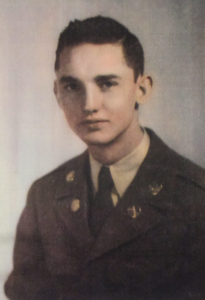
Arthur Augustus Barry, age 23, from Batavia, New York, Genesee county.
Service era: Korea
Date of death: Sunday, September 16, 1951
Death details: On April 22, 1951, elements of the 24th Infantry Division along with the 5th Regimental Combat Team (RCT) were dug into positions near Seoul, South Korea, where the Chinese Communist Forces (CCF) had regrouped and begun a large-scale effort to penetrate the valley areas east of Seoul. Just prior to the main CCF offensive, the 5th RCT was executing part of a blocking action known as Operation Dauntless, in which its 1st and 2nd Battalions launched an attack against CCF forces in the Chorwon Valley to the north. They pushed the enemy out of the area and set up defensive positions, but the CCF soon regrouped and returned with a massive counterattack. While this assault was repelled, heavy pressure over the next eight days forced the 24th Infantry Division, along with the 5th RCT, to gradually fall back to stronger positions. The U.S. units suffered heavy casualties over the course of the fighting and withdrawal. Corporal Arthur Agustus Barry entered the U.S. Army from New York and served in H Company, 2nd Battalion, 5th Regimental Combat Team, 24th Infantry Division. He was captured near the village of Udamn-jang, South Korea, on April 23, 1951, during the 5th RCT’s withdrawal. He was marched with other prisoners into North Korea and eventually arrived at holding camps near Suan in May and June. In September, CPL Barry was marched farther north towards the Chinese prison camps along the banks of the Yalu River; however, he died of malnutrition on September 16 at a holding camp near Kangdong, east of Pyongyang. He was buried by his companions near the village, but his remains could not be recovered or identified following the war. Today, Corporal Barry is memorialized on the Courts of the Missing at the National Memorial Cemetery of the Pacific.
Source: National Archives, Defense POW/MIA Accounting Agency, Rochester Democrat and Chronicle


